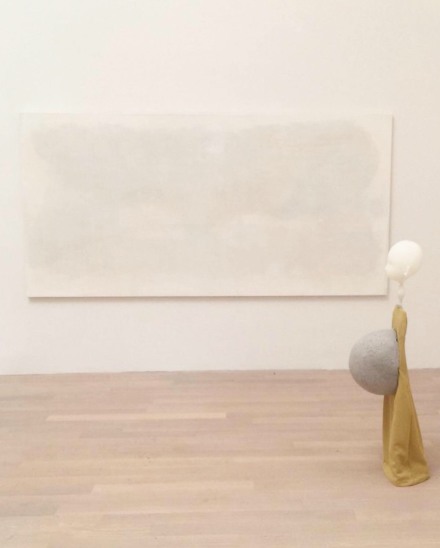
Cathy Wilkes, Untitled (2019), via Art Observed
Within the grand architecture of the British Pavilion at the Venice Biennale, artist Cathy Wilkes, born in Northern Ireland, has orchestrated a somber, quiet affair, moving the viewer through an occasionally disquieting, frequently challenging arrangement of narrative fragments and installation pieces that draw on the long echo chamber of history. Presenting an arrangement driven by both tension and reflection, the artist’s work is a particularly striking entry in what has been a consistently strong series of outings in recent years for the British Pavilion.
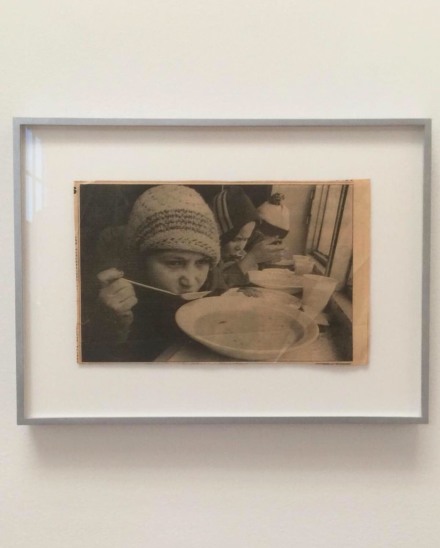
Cathy Wilkes, Untitled (2019), via Art Observed
Entering the space, one is greeted by a low rectangular object, ostensibly a tomb of some sort, as evidenced by the scraps of flowers and foliage that top it, and the delicate, respectful space the objects around it seem to give it. A series of slender human figures circle the tomb, and are spread throughout the space, turning the whole of the galleries into something of a last gathering, a funereal assemblage in which the objects of a life, are assembled in total. Throughout the space, quite dimly lit, a range of figures and images present themselves: photographs and china plates, paintings, a child’s high chair, and other objects. A sense of a life disturbed is spread throughout, the figures seeming to flit away from easy relationships or concrete connection between elements, as if a moment of trauma had ruptured the space of understanding.
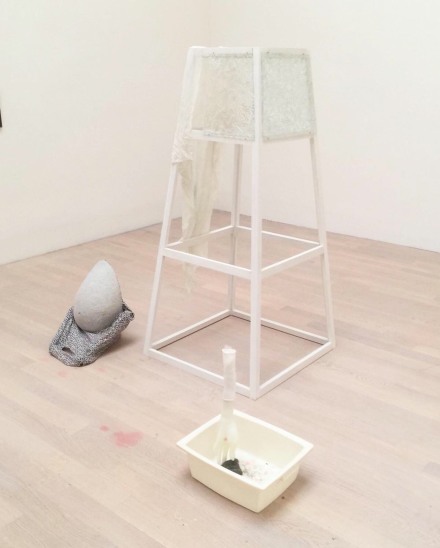
Cathy Wilkes, Untitled (2019), via Art Observed
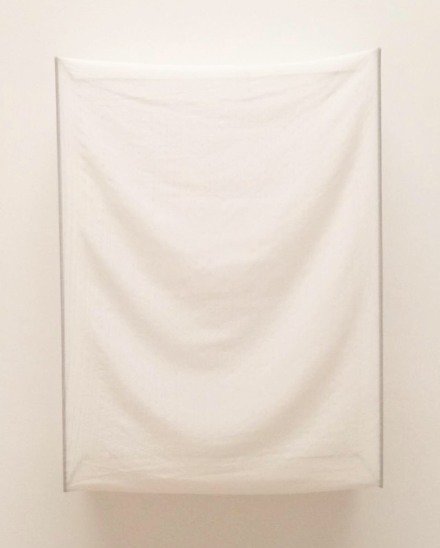
Cathy Wilkes, Untitled (2019), via Art Observed
The role of the tomb is an interesting one, as if to anchor the idea of a body in absence, while keeping it, to some degree, within the space itself. If one is to understand the show as funereal, the rectangular tomb provides the necessary mooring, but also is held in abstraction to the degree that even this conclusion, this idea of the space “as scene” is still held in indeterminacy.
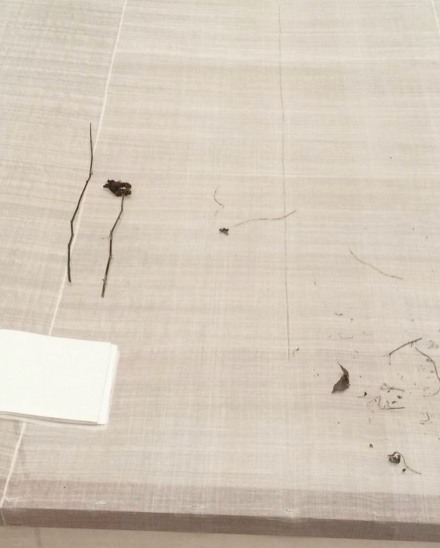
Cathy Wilkes, Untitled (2019), via Art Observed
“I grieve for things over and over again for a long long time. The work is about repeatedly coming towards something, something you don’t quite understand,” Wilkes told the Guardian about her installation. The show is mournful, commemorative, but the artist seems to remove the center of the work, the object of this longing and desire, instead presenting a cinematic landscape of the tropes and iconographies of absence. Stepping back from a human subject, and into the world that surrounds them, that the human experience bleeds out into and populates with their physical impressions, Wilkes, presents a structure for longing and loss, a physical architecture that defines the states of memory and absence.
— D. Creahan
Read more
Cathy Wilkes at the Venice Biennale [British Council]



